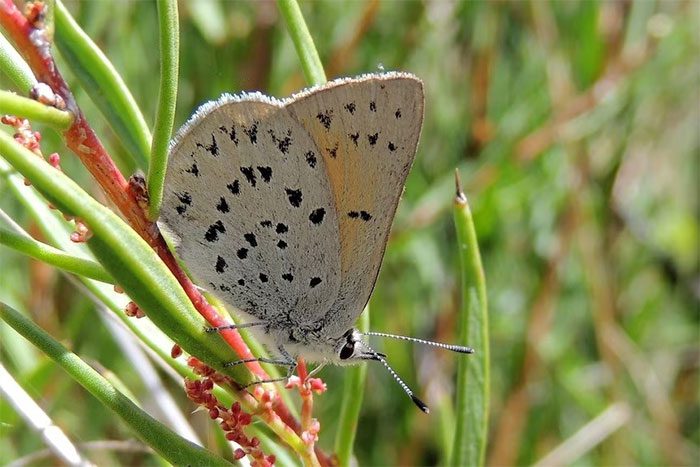This newly discovered butterfly species was first photographed by a scientist in 2017 but has not been officially identified until now.
For the first time in nearly a decade, the scientific community in Australia has recognized a new butterfly species.

The newly identified butterfly species in Australia is characterized by large, distinctive spots on its wings. (Photo: Michael Braby).
The butterfly, scientifically named “Cyprotides maculosus”, is recognized for its large, distinctive spots on its wings. It typically inhabits high-altitude areas within and around the Australian Capital Territory (ACT).
According to Mr. Michael Braby, a biologist from the Commonwealth Scientific and Industrial Research Organisation (CSIRO), who named the species, this discovery is significant.
He stated: “The last time a new butterfly species was discovered was in 2015, which was eight years ago, so finding a new butterfly species right here in the ACT, just 50 kilometers from Canberra, is truly remarkable.”
In fact, images of this butterfly were captured in 2017. Later, one of Mr. Braby’s colleagues searched for and collected a live specimen at Kosciuszko National Park in 2019.
In 2020 and 2021, Mr. Braby found their breeding habitat in frost hollow grasses in the natural grasslands under the high mountains—where they feed and lay eggs on the Hakea microcarpa, a flowering shrub species native to the eastern coastal area of Australia.
Through experimentation, this biologist discovered that the caterpillars feed on plants related to Hakea microcarpa, but the females will only lay eggs on this specific type of plant.
Mr. Braby noted: “They live in very specific frost hollow habitats around the Namadgi area and in the nearby Kosciuszko National Park, at altitudes of about 1,100 to 1,500 meters. It’s not a place you would typically want to go looking for butterflies.”




















































